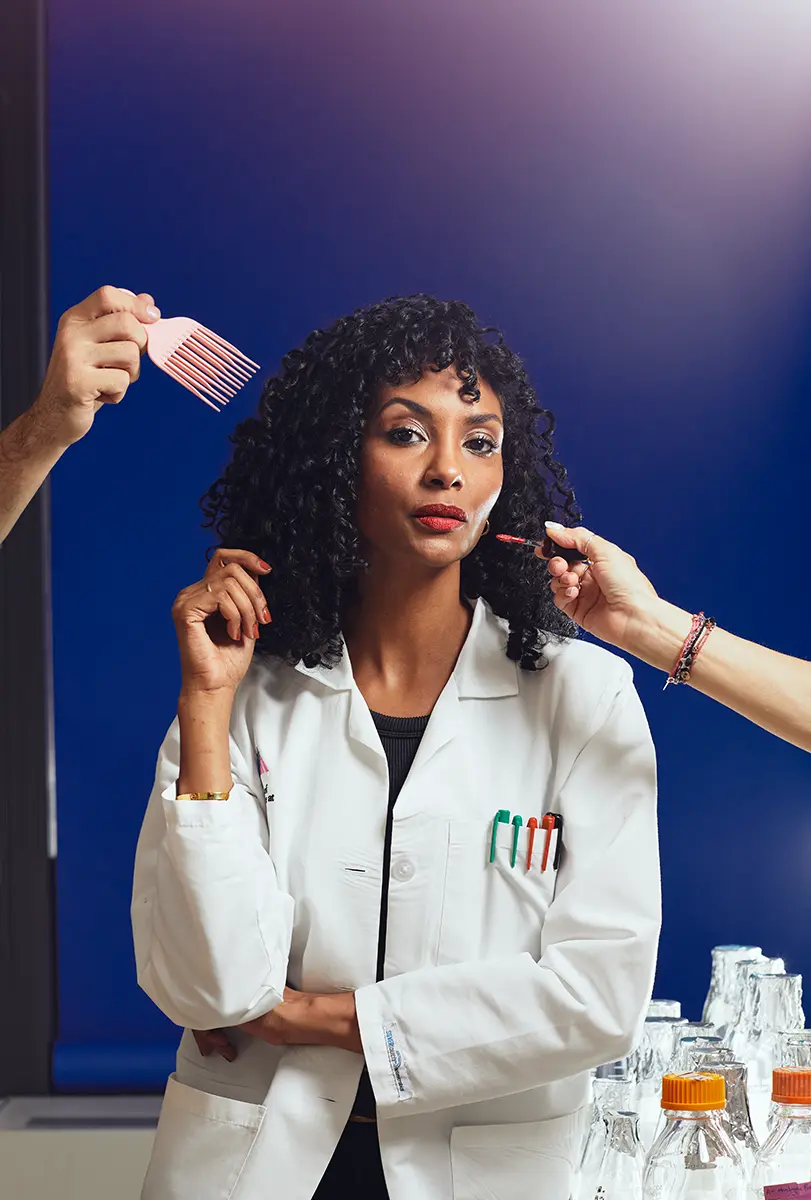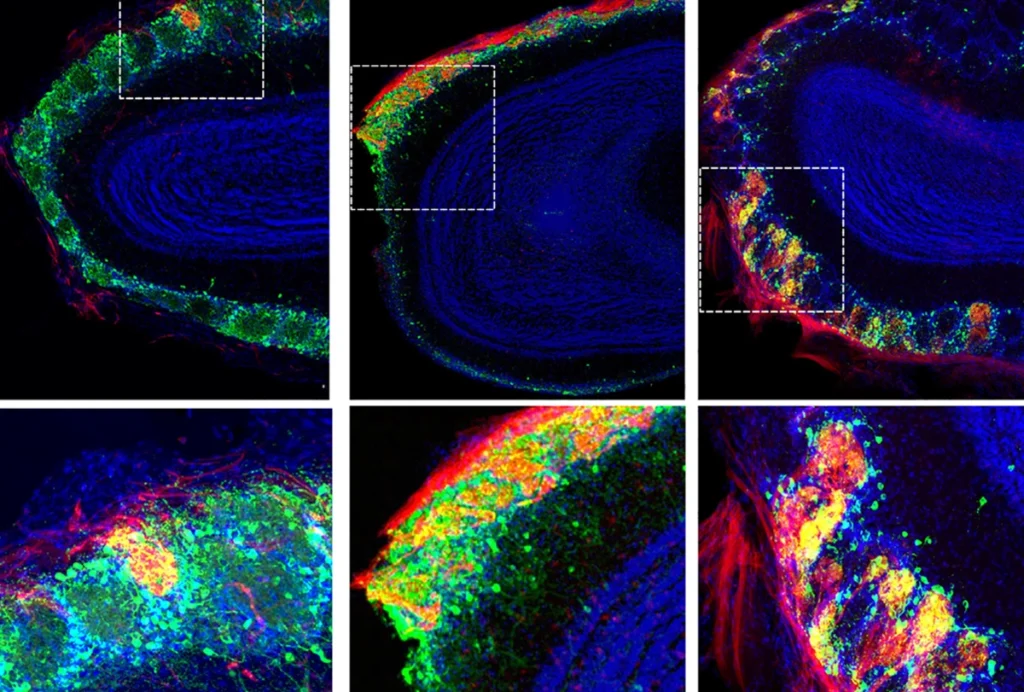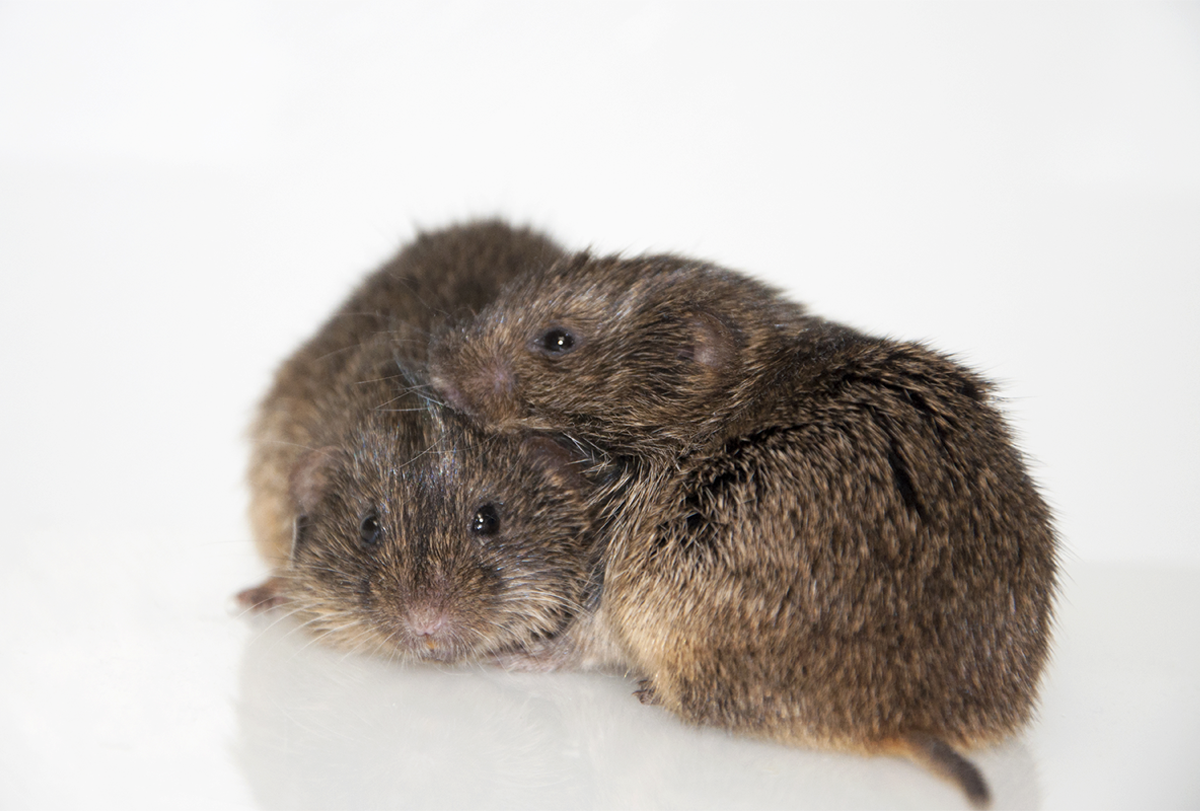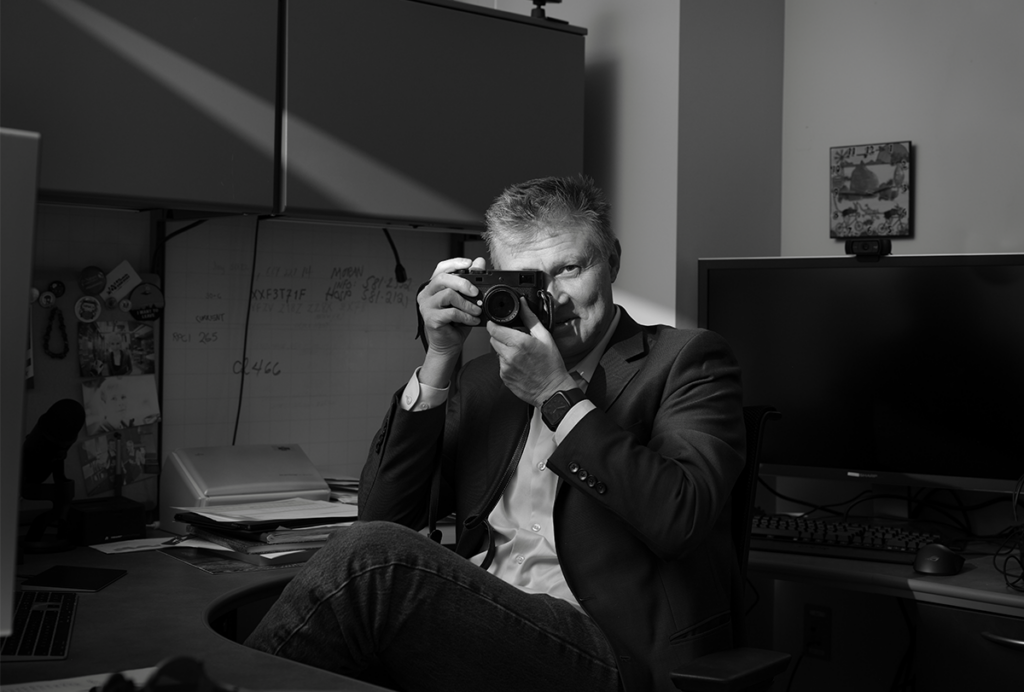When Aya Osman was 17 years old, a fashion designer spotted her at her local hair salon in Acton, London, and asked if she would be interested in modeling for a brand’s new lookbook. Osman hadn’t previously considered jobs in fashion; she had envisioned going to medical school, she says. But she took the job and signed with a London-based agency, and her modeling career soon took off—all as she finished college and began graduate work in toxicology.
Osman is now assistant professor of pharmacological sciences at the Icahn School of Medicine at Mount Sinai, where she studies brain development, with a focus on the interplay between genetics and the environment. And although she has mostly traded the catwalk for the lab bench, she still finds time to squeeze in some modeling, she says. “You can get so frustrated doing science and trying to make things work, and it’s helpful to have this outlet where you can be fabulous for a day.”
Osman spoke with The Transmitter about the importance of having interests outside of science and how she’s worked to build community with other international trainees.
This interview has been edited for length and clarity.
The Transmitter: What’s the big question that drives your research?
Aya Osman: I’m interested in how environmental factors interact with genetic factors to influence the brain and result in psychiatric conditions such as autism and an increased risk of addiction disorder. The overarching aim is to manipulate crosstalk between the gut and the brain to change the trajectory of developing these conditions—either through therapeutics targeted at the gut microbiome or through more classical pharmacology.
TT: What makes you excited to get to the lab each day?
AO: Right now, it’s a simple enzyme-linked immunosorbent assay (ELISA) that I’m working on for assessing mu opioid receptors. Another day, it could be a different challenge, such as running mouse behavioral tasks and trying to get consistent results across animal cohorts.
This is what I really enjoy about science and research. Every single day, I’m waking up to a different challenge; it’s not monotonous.
TT: How does your background in fashion modeling influence what you do now?
AO: I’ve realized that modeling gives me a great opportunity to share science with a younger community. If they’re picking up a fashion magazine and they’re seeing a brown woman that looks like them, and she’s also a scientist, maybe they’ll learn more about the steps I took to get there. Maybe they’ll say, “Oh, she looks like me, and she was raised like me, and she’s interested in fashion. But she can also do the science thing.”
It’s becoming really hard to keep up with the modeling work now that I’m moving toward independence and opening my lab, and eventually having students. But I’m determined to keep it up just because of the impact that it has.
TT: What kind of modeling have you done?
AO: I’ve worked with L’Oréal. I’ve shot campaigns for Aveda hair salon. I’ve walked for both New York Fashion Week and London Fashion Week, shot campaigns for Stella Artois. The coolest thing was shooting a West End movie trailer with Channing Tatum!
TT: Oh wow—what did you do in that?
AO: You know “Magic Mike”? They were doing the play there in London in 2018. So they wanted to shoot the trailer to let people know it was coming to the West End. We shot the trailer, and they liked my acting skills. When Channing Tatum came on set, they even asked me to go meet with him one-on-one to develop more lines between us. But honestly, I was so starstruck and nervous that I kind of just fumbled the whole thing!
TT: What else do you like to do and why?
AO: I’m involved with the Story Collider, which hosts live shows and podcasts in which scientists share stories about their lives and their work. The Story Collider came to me to tell my story on stage, because of the work I’ve done in fashion. And then Mount Sinai saw that, and they asked if I could do that for other scientists within Sinai. We developed a four-week course in which the producers at the Story Collider come in to teach scientists these great storytelling skills. The scientists who have developed a story during the course get to go and tell it on stage at Caveat in New York, and I host the shows.
I’ve also gotten to work with the Hip Hop Museum in the Bronx. They have a hip-hop science line of work, which is basically looking at the intersection between science and the arts—exactly where I fall. The goal is to open up the field of science and let people know that it’s not just for the kind of person you traditionally perceive as a scientist—that is, a middle-aged white man.
TT: Who has been an important inspiration or mentor in your life?
AO: First, my Ph.D. supervisor, Alexis Bailey. He’s responsible for sending me to the U.S. for my postdoctoral research. When I first moved, I faced a lot of challenges. He also trained here and really struggled, in terms of competition—it’s just very different from Europe. But he had this ability to shut out what’s going on in the world, shut out opinions, shut out all the pressure and the competition and just do what he thinks is interesting and what he thinks is right. And over time, I’m realizing what an important trait that is.
He also helped me understand the importance of having interests outside of science. Science can be hard; sometimes things don’t work, but I can put that aside and say, “Alright, I have a shoot coming up. Let me have some fun with that. And then I’ll get back to the nitty gritty of science.”
My postdoc supervisor, Drew Kiraly, has also been a big inspiration because of his translational outlook. In his lab, I got to work with clinical data, and I got to work with patients. And he showed me that it’s possible to do translational science and keep that as a focus.
I’ve also been inspired by Yasmin Hurd and Bianca Jones Marlin, fellow Black scientists navigating the academic landscape. And also Daisy Robinton, one of the few scientists who also leads a successful modeling career. She is a molecular biologist who completed her training at Harvard and is now CEO of Oviva Therapeutics.
TT: What advice do you have for other international scientists?
AO: It helps to have a community where you can go to talk with other international trainees about these problems. Even if it’s not going to solve your problem, just sharing it with somebody really helps. At Mount Sinai, for example, I co-launched the Emerging Scholars Program with Zach Pennington and Davide Folloni, which is aimed at increasing the pool of postdoctoral trainees from underserved backgrounds. Holding symposia and seminars at your institution on topics around diversity and inclusion also helps, because it gets the dialogue going.





